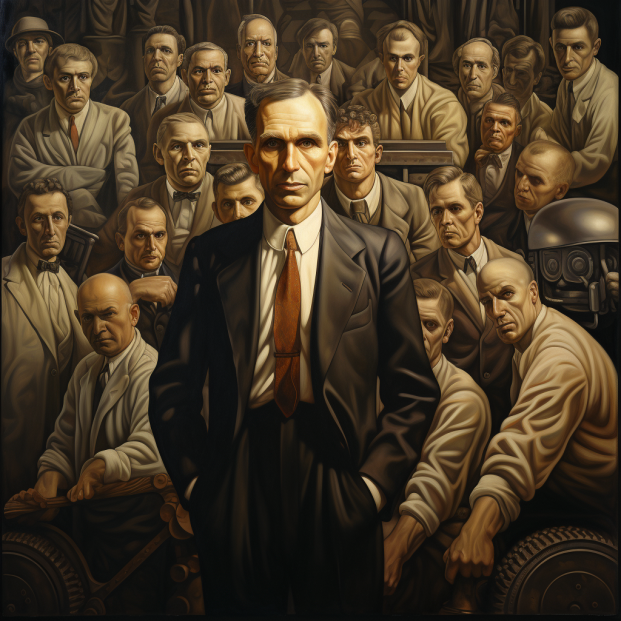Henry Ford and the $5 Workday

Henry Ford and the $5 WorkDay
If your boss doubled your wage, would your loyalty to the company increase?
In an era where $2.34 was a reasonable day's wage in the auto industry, Henry Ford shocked the world by offering a staggering $5 per day to his workers.
This audacious move wasn't purely altruistic; Ford saw the palpable benefits it could bring.
His objective was dual-pronged: On one side, Ford aimed to curb the rampant staff turnover that was ubiquitous in the industry while also thwarting the increasing pressure from unions for better pay and conditions.
On the other, he saw that by paying his workers a decent wage, they could become potential customers for his automobiles.
Outcomes
- The wage hike significantly reduced employee turnover and improved morale among Ford workers.
- By valuing their specialisms and their skills, and by putting a monetary value on them, it altered societal views on industrial workers and ushered in new thinking about labor, economics, and consumerism.
- Enabled these, and other, workers to become consumers, expanding the market for goods and fuelling economic growth.
How can this be used? What examples can be drawn?
1. Employee Welfare and Organizational Success:
- By ensuring his workers were well-compensated, Ford fostered a stable and contented workforce, which minimized turnover and increased productivity. This underscores the importance of viewing employee welfare as integral to organizational success. But it wasn’t all altruistic – the move staved off union pressure and as point two shows…expanded his customer base.
2. Expanding Consumer Base Through Empowerment:
- Ford not only increased his workers’ purchasing power but expanded his customer base, illustrating that empowering consumers can be a potent business strategy. At $2.34 an hour there wasn’t much disposable income for the workers, doubling to $5 meant there was disposable income that they could spend on the new status symbol of the day – and automobile.
3. Strategic Wage Setting:
- Ford's introduction of the $5 day wasn’t the act of a pure philanthropist; it was a strategic move aimed at reducing excessive turnover and stifling unionization. From a leadership perspective, this highlights how wage strategies can be employed to navigate organizational challenges and objectives. From a union perspective, read the fine print. Does the deal bring benefits beyond the dollar value?
4. Economic Impact and Societal Change:
- Ford’s wage policy had a ripple effect across the industry and society, altering perspectives on worker value and contributing to economic shifts. This signified the broader impacts business decisions can have on society and the economy.
5. Balancing Economics and Ethics:
- While Ford’s wage hike had apparent ethical and societal benefits, it was also deeply connected with his economic and organizational objectives. There is an intricate dance between ethics and economics in business decision-making – this whole episode has been viewed as a strategic masterstroke.
Concluding Thoughts
The Five Dollar Day was far more than a wage increase; it was a pivotal move that showcased the integral relationship between a company and its employees and highlighted how strategic, well-thought-out policies could yield mutual benefits for both. Ford shifted the paradigms of his era, demonstrating how organizational welfare and societal welfare can be inextricably linked.
Through strategic, socially impactful decisions, Ford managed to alleviate some of his company's challenges, all while transforming his workers into consumers and inadvertently stimulating the economy.
This transformation isn’t just historical but continues to serve as a pertinent lesson on the symbiotic relationship between companies and their employees, particularly in discussions around wage, value, and societal impact in the contemporary business world.
Your Reflection
Reflect upon Henry Ford’s foresight and strategy in implementing the $5 workday and consider:
- How does the welfare of your employees directly and indirectly impact your business and its success?
- In what ways can your organizational strategies concurrently benefit your enterprise and the larger society?
- How might contemporary leaders balance ethical considerations with strategic organizational objectives, particularly in matters of employee welfare and compensation?



